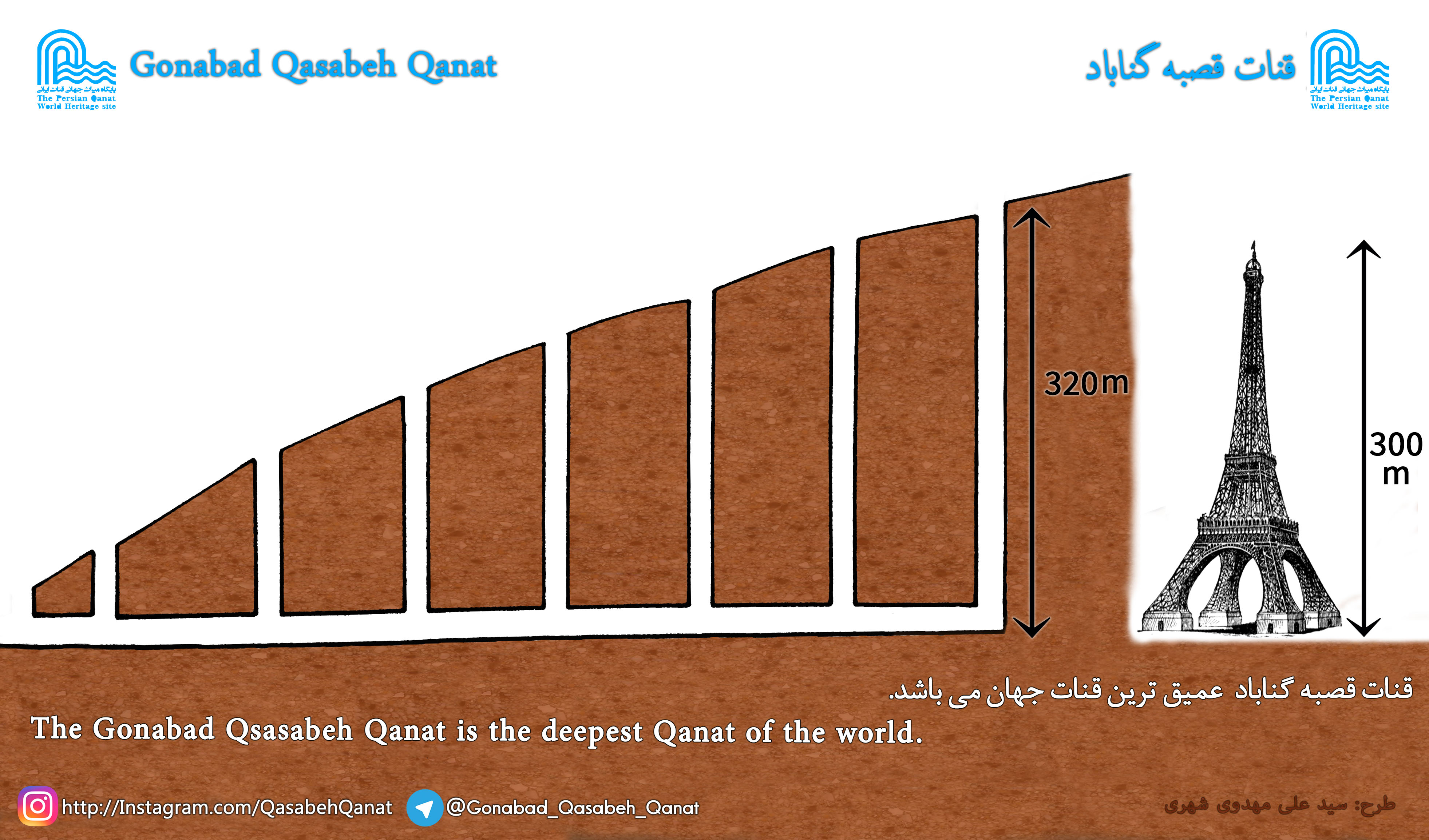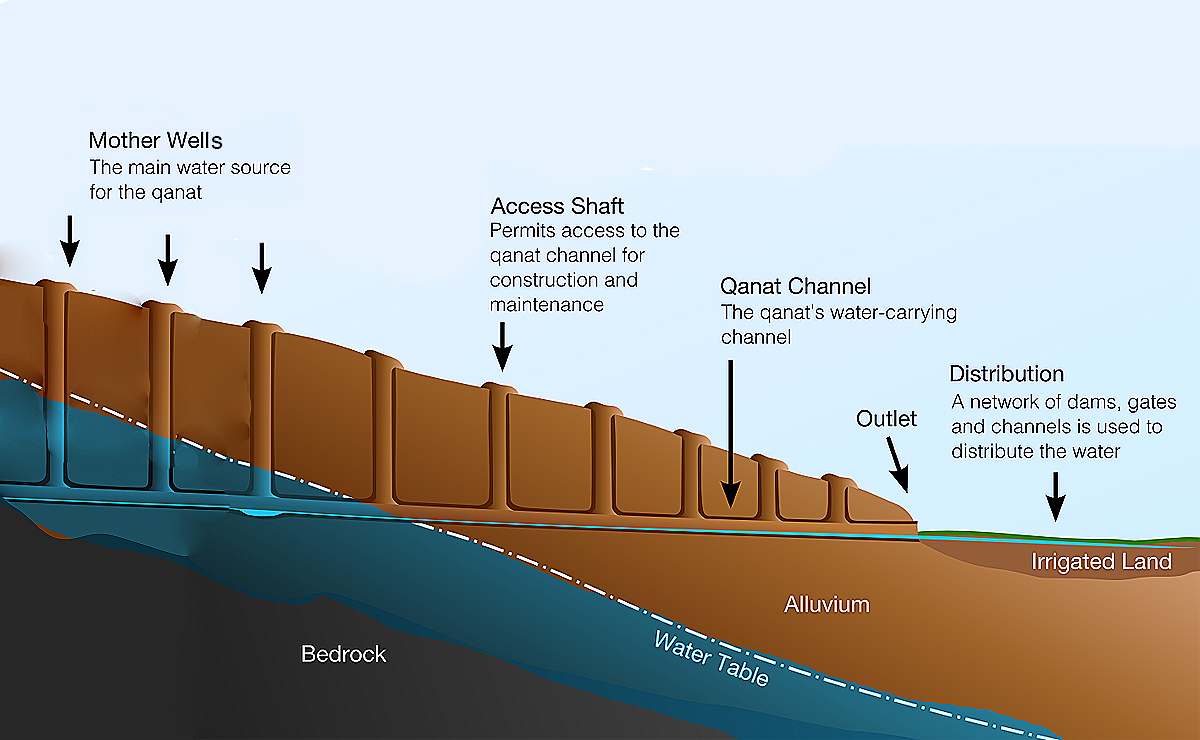The Mother Well
The last and deepest shaft dug in a series of well-like shafts in each qanat system is called the Mother Well, which is built at the end of each system and after access shaft. In deep and rich water repositories such as Qasbe qanat, at the ends of which a problem with permeation of water through the walls is usually faced, the first well dug in a qanat is called Gamane (trial well). The trial well is used to make muqannis ( diggers) aware of the amount of sufficient flow of water a qanat can provide and also of the capacity of the water table. The depth of trial well varies depending on the depth of water table in different places. This depth usually increases in regions like Gonabad where there are plains and deserts. If the trial well reaches the water table at the depth predicted by muqanni(digger), it will be named a mother well. Otherwise, the muqanni will proceed with digging wells until the one qualifying as the mother is found and chosen. One unique feature of Qasbe qanat of Gonabad is its deepest mother well. Different depths of mother well in this qanat have been mentioned in different sources over time: Nasir Khusrow ,75 Guz( guz is similar to yard , 5 Guzz=4 yards); Henry Goblo ,300 meters; Sadullah Velayati, 247 meters; Hussein Pour Ebrahimi, 300-320 meters; Seyed Hasan mojtabavi, 280-300 meters; bureau of agricultural management of the town of Gonabad, 340 meters; and geography encyclopedia of Iran 450-500 meters. However, thanks to cartographies made over the last decades, the actual depth of the last identifiable shaft has been measured and set as 250 meters. Obviously, location of the last definite qanat on the earth has not been identified due to floods covering it over the past few years. Therefore, the depth of Mother well would be certainly more than this.

